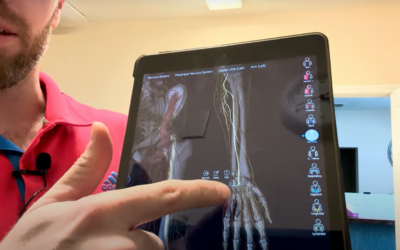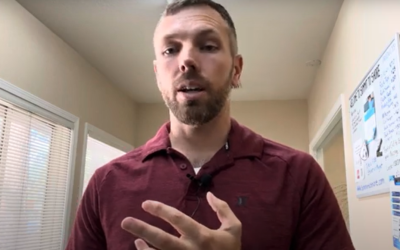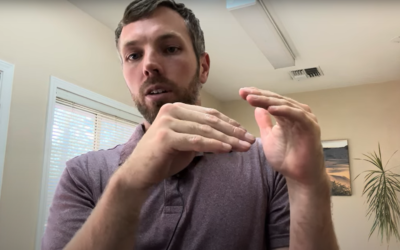This one is about heel pain and plantar fasciitis. The plantar fascia is connective tissue that connects the heels to the toes on the bottom of the foot. You have muscles that come into it from the calf, the reason that this is important is because if you understand that the plantar fascia is connective tissue then you understand that connective tissue doesn’t respond the same way that muscles do. So one thing you can start with is stretching some of the muscles in the calf, different motions in the ankle to get them to loosen up is one part. Another part is getting the muscles of the foot to get stronger. A simple exercise is called a “short foot” exercise. You want to focus on 3 points of contact, the ball of the foot on the inside, on the outside, and at the heel. Pretend my hands are my feet, focusing on those 3 points of contact imagine you are trying to spread the floor with minimal actual movement of the foot, which should raise of the inside arch of the foot and feel like muscles are working in the foot without moving very much. This is trying to get the muscles in the foot to start working. So by strengthening the muscles in the foot and stretching the muscles in the calf, you are decreasing the tension on the plantar fascia. That is what I have for you today, we’ll see you next time.
How to improve carpal tunnel syndrome
Carpal tunnel syndrome can cause problems to your every day life. Finding where the nerve is effected and why it is irritated are ways to manage the symptoms.





